- What's New
- Pricing & Purchasing
- Lead Times
- Literature & Samples
- Services & Warranties
- Careers
- Find a Rep
From privacy booths to smart parking garages: These photos show what offices of the future will look like
By Jennifer Liu
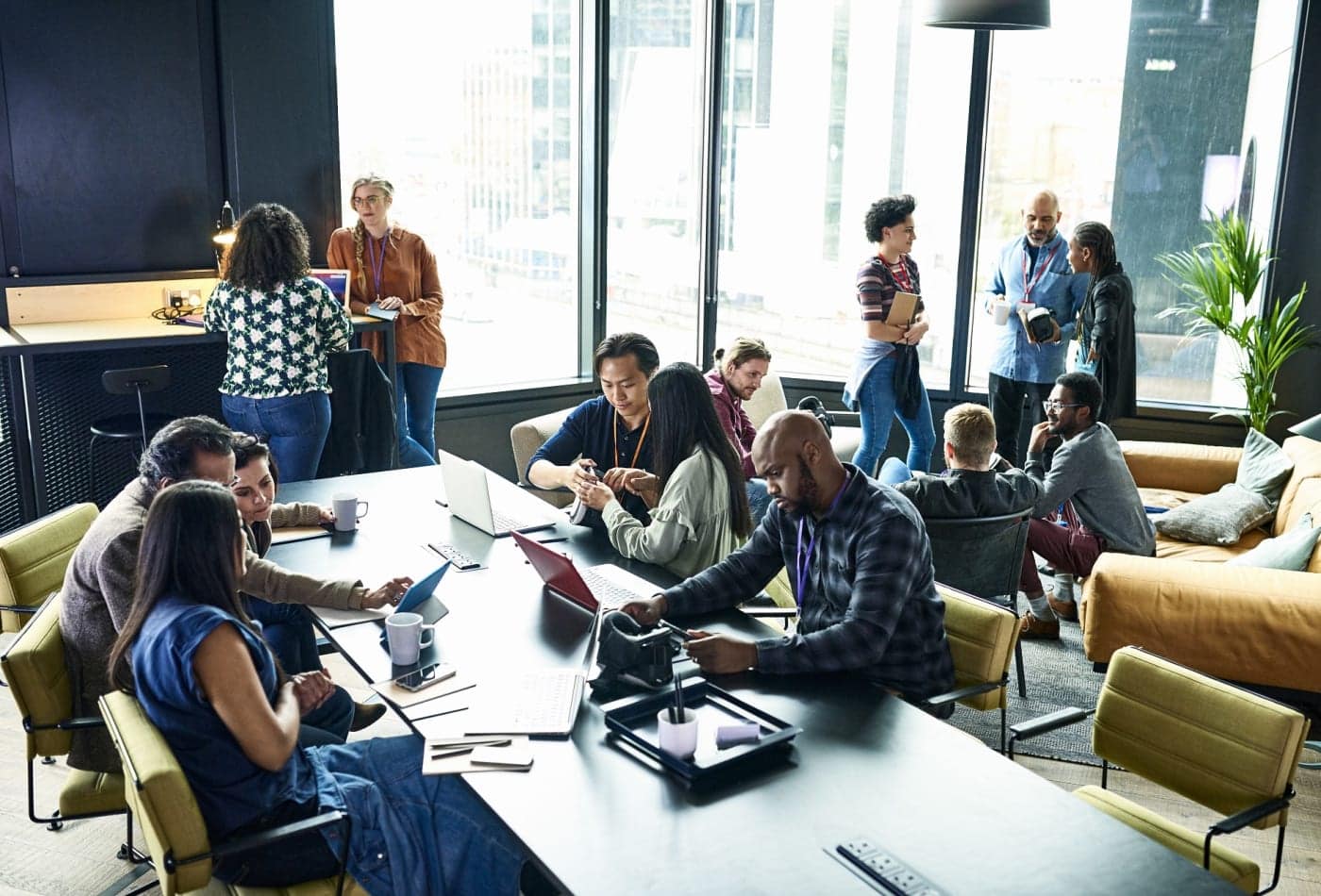
Getty Images
Technology has dramatically changed where, when and how people work. Another contributing factor that isn’t as sexy but is arguably just as influential for the working world: the rising price of commercial real estate.
As the cost of traditional 10- to 15-year office leases has ticked up nationwide, corporate tenants who want to be able to scale quickly are turning to shorter and less costly 1- to 5-year leases where they can add (or reduce) square footage at a much faster pace. As a result, flexible and co-working spaces are now the fastest-growing type of office space in commercial real estate. They currently comprise less than 5% of the market and are expected to make up 30% by 2030, according to real-estate company JLL.
CNBC Make It spoke with experts in the office design space for what workers can expect in 2020 and beyond.
Pop-up privacy booths
Once limited to secretary pools of the 1940s, the open office floor plan has become the norm. Companies reason these open desk spaces can foster creativity and teamwork — not to mention there are financial benefits to allocating less square footage per employee.
The problem with open offices, however, is that most workers don’t like them. Research has found workers in open offices experience more uncontrolled interactions, higher levels of stress and lower levels of concentration and motivation.
Enter: Free-standing privacy booths that offer the comforts of a singular, private work station including a desk, soundproof walls, power outlets and ventilation. The many players in this emerging market include companies such as Room, Zenbooth, Spaceworx, TalkBox and Cubicall.
“The problem we’re solving is such a human problem,” says Room co-founder Morten Meisner-Jensen. “We need peace and quiet to do focused work. The way companies have migrated from single private offices to open plan layouts has not been done in the right way.”
Workers can use these spaces to take a phone call, complete a project on deadline or host a video-conference in a private space without disrupting colleagues.
Of course, companies have their own advantages for installing pre-made privacy booths: These spaces may improve worker productivity, and by extension the business’s bottom line. Meanwhile, the cost of installing them is a fraction of the time and money it would take to reconstruct an entire office. On the lower end, a phone booth from Room costs roughly $3,500 and takes a few hours to assemble.
Data-tracking smart campuses
With workers more mobile than ever, organizations will begin relying on data-tracking applications to gather analytics about how workers move around and use an office. These analytics will then inform real-time improvements that can help organizations maximize their space and energy use.
Through movement sensors and other digital tracking products, “we can adapt the space to the needs of the people who are in it at that time, rather than on a 10- to 15-year timeline,” Meisner-Jensen says.
Arjav Shah is an interior designer at architecture firm Perkins and Will’s New York studio, which recently redesigned Unilever’s North American headquarters in New Jersey with “smart features” throughout the campus.
“Integrated smart technologies record energy data and automate energy use, enabling the building to learn from employee behaviors and remember their preferences,” Shah explains. “Rooms, even entire floors, can turn themselves off during periods of infrequent use, and staff can customize their personal lighting and audiovisual systems with custom apps and sensors that are deployed all throughout the interior space.”
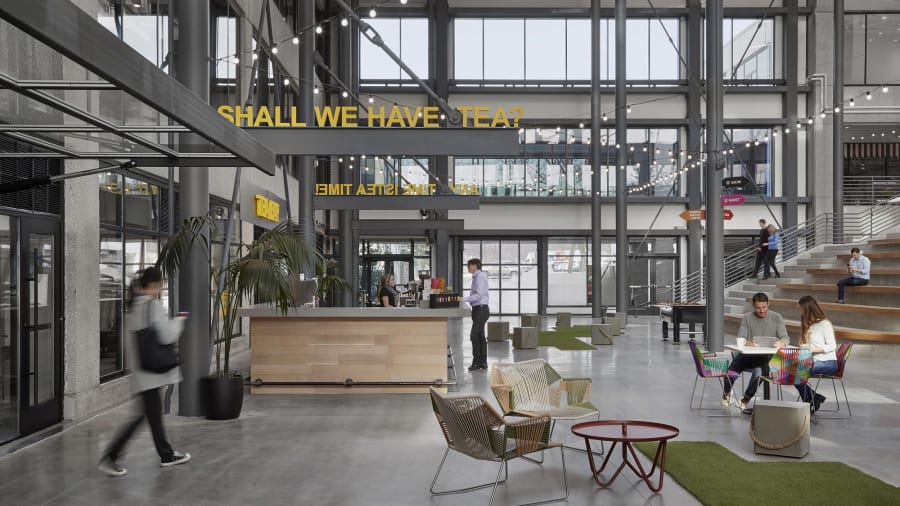
Unilever’s New Jersey headquarters includes ‘smart campus’ technology to automate lighting, temperature control and conference room preferences based on where, when and how workers are using the space. Perkins and Will
Other smart campuses include tools that help employees navigate large buildings (like a GPS to find a conference room or your colleague’s desk), more control over the ability to adjust office temperature, and even smart parking technology in the parking garage, where drivers of a vehicle with the appropriate technology can use their smartphone to send their car to a vacant parking space or retrieve it at the end of the day.
These developments aren’t without concerns over how companies will safeguard employee data, however, making the field of cybersecurity and regulations to protect individual data all the more important as these technologies advance.
Community spaces
As more people move to working in flexible and co-working spaces, they’ll prioritize the ones that provide a sense of community traditionally offered by companies, experts say. Companies like WeWork and The Wing highlight a membership model where, in addition to having a space to work, individuals can take part in networking events, panels, workshops other career development resources.
Another example: the co-working and community space The Riveter, founded by former lawyer Amy Nelson. While members of all backgrounds are encouraged to join, the spaces are especially accommodating to the way women work. Nelson cites statistics that women start businesses at five times the rate of men and that more than three-quarters of small businesses are solo entrepreneurs as reasons why she wanted to build a space for members of today’s flexible work economy. Members are able to network in The Riveter spaces, which are roughly 70% open floor plan, and attend events dedicated to leadership, diversity, advocacy, civic engagement and other programming.
Architecturally, the spaces are designed by women, for everybody. In contrast to traditional offices built to accommodate the strength, height and metabolic rate of the average American man, The Riveter spaces capitalize on bright, natural light; plant life to stimulate circulated air; gender-neutral color schemes and furniture where desks, seats and armrests are adjustable.
“How spaces are designed tell us whose voices belong there,” Nelson says.
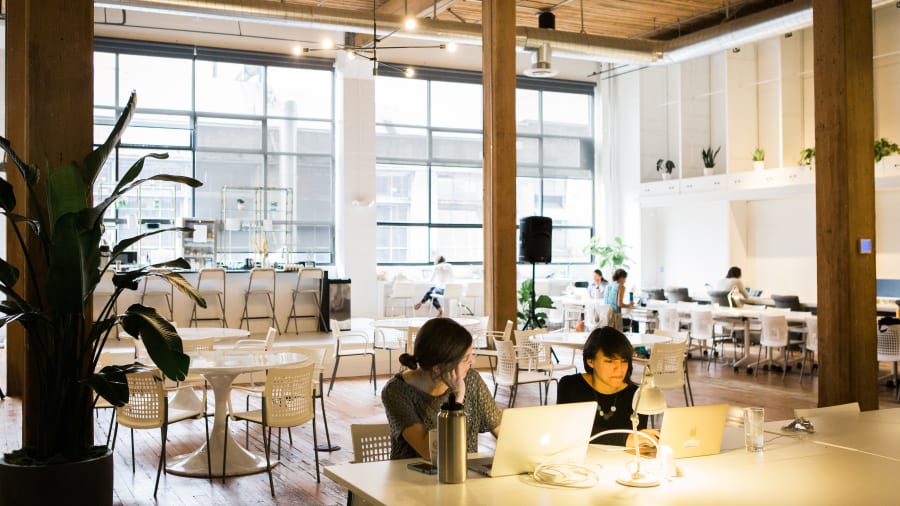
Co-working companies such as The Riveter provide members with networking and career development opportunities in addition to space to work. Amy Galbraith
Beyond being accommodating to women, it’s likely these membership spaces will become more niche with time, says Xandro Aventajado, co-founder of design firm Current.
“Toward the end of last year we started to see more co-working spaces for specific trades,” Aventajado says. He gives an example of a co-working space in Brooklyn, New York, that gives artists access to wood shops, laser printers, spaces to photograph and promote their work, and a library of books related to their industry.
A major focus on wellness
Data from the Society for Human Resources Management show the No. 1 employee benefit people want most is health care coverage. Employers are responding in kind, with one-fifth of organizations reporting they increased their health and wellness benefits offerings from 2018 to 2019.
This focus on wellness is translating to the office space, design experts say. For example, Room partnered with the meditation app Calm in October 2019 to create a meditation booth for office use. Other wellness spaces, such as nap pods, have become a fixture in cutting-edge offices.
This also goes for providing for health resources at certain junctures of life, especially for working moms. Shah says he’s worked on an increasing number of offices that include mother’s rooms that go beyond a dark, isolated space to pump breast milk every few hours.
“Providing well-designed accommodations for new mothers should be recognized as a crucial component of every inclusive workplace, and as designers, that’s a right we need to defend,” Shah says.
Federal law requires employers to provide a completely private space that is not a bathroom for mothers to pump. The space doesn’t have to be a permanent fixture, however, which means unused closets or even enclosed cubicles of a certain height can be used as a temporary pump room. For many women, this environment isn’t ideal.
“This increasing popularity amongst clients makes us hopefully optimistic the requirement of a nursing room will become mandatory for companies of all shapes and sizes,” Shah adds.
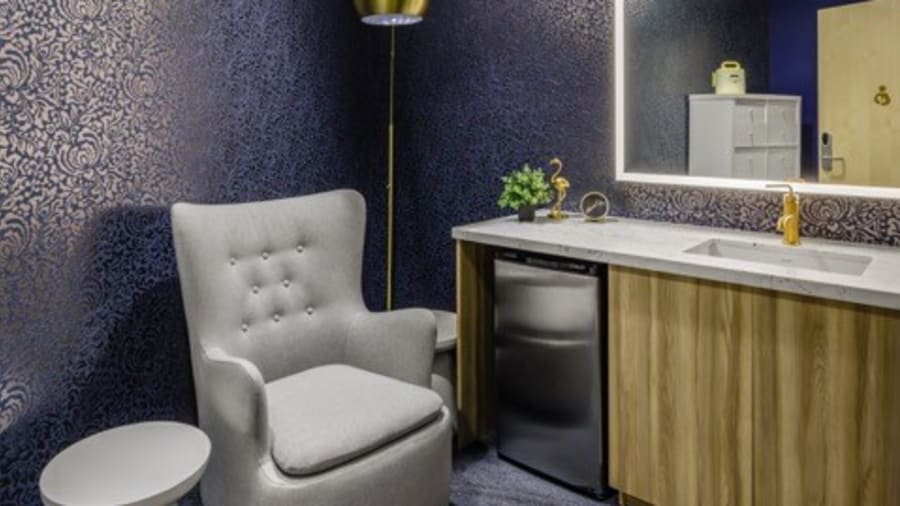
A fully-outfitted mother’s room at the Cambridge Innovation Centre, where a highly competitive talent market means workers expect amenity-rich workplaces, designed by Perkins and Will’s Boston studio. Raj Das
Current co-founder Rachel Kane acknowledges that social shifts, especially conversations around employees demanding organizations provide for better work-life balance, are also making a difference.
“It’s the ethos of this generation,” Kane says of office design that promotes wellness. “This wellness that’s 360 degrees shouldn’t be just at home; it should extend to the workplace. When companies set these trends, others will follow, because they see that people are happy to work there.”
A residential look and feel
Designers Kane and Aventajado say organizations of all sizes are trying to design spaces that feel like a home away from home.
“We find that our clients want those layers of a residential space, whether it’s throw pillows on a sofa or interesting wallpaper,” Kane says. “You want to create an office space where people don’t want to run home at 5 o’clock.”
Aventajado adds that companies with multiple offices are becoming more focused on giving each space a unique design identity. A year and a half ago, Current worked with a consulting firm that had offices across New York City, Boston, Seattle and Austin. While they wanted to maintain the firm’s industrial-chic aesthetic across campuses, they also wanted each to reflect its geographic location. Its Austin office, for example, features locally-sourced custom millwork, wallpaper, rugs and artwork that channels the Texas tradition of the rodeo.
“Keeping things local goes a long way in terms of design sustainability,” Aventajado says, adding that sourcing furniture from local vendors can lower the office’s carbon footprint by minimizing shipping, contribute to the local economy and tap into the location’s look and feel in an organic way.
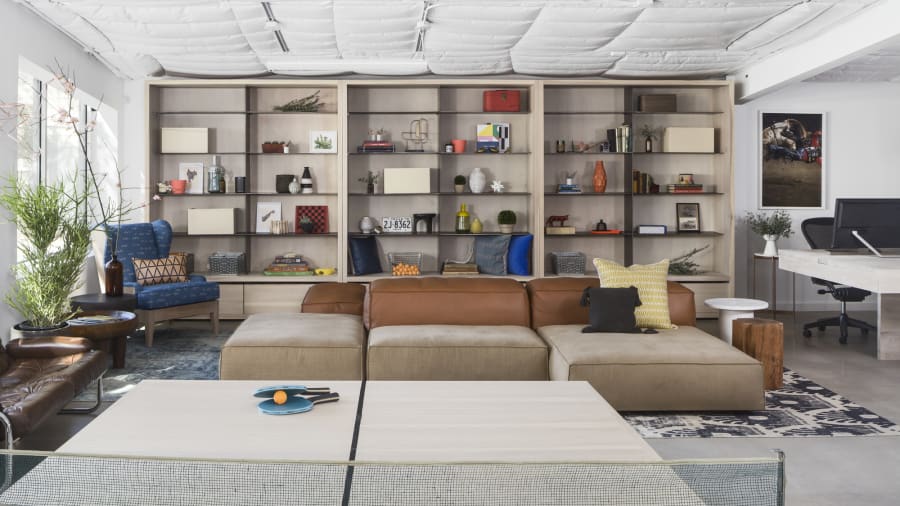
Companies are using residential design elements, such as soft seating and bookcases that mimic a home’s living room, to create a space where employees don’t want to rush out at 5 o’clock. Andrea Callo
Design as a retention tool
In today’s tight labor market with historically low unemployment and people quitting jobs in record numbers, hiring and retention are top of mind in nearly every industry. Thoughtful office design is just one tool organizations will use in order to bring workers in and keep them happy enough to stay there, says Jonathan Webb, vice president of workplace strategy at global furniture manufacturer KI.
Webb’s recent research examines the habits of incoming Gen Z workers and finds that these young professionals value mobile work spaces, private spaces when needed, open areas to collaborate and communicating face-to-face. He says organizations would do well to take these factors into consideration, and that building a work space at the same time as building a workforce go hand in hand.
“At the end of the day, organizations are trying to design for a community that reflects their culture,” Webb says. “And this idea of using community as a design strategy impacts corporate culture, wellness, productivity and retention.”